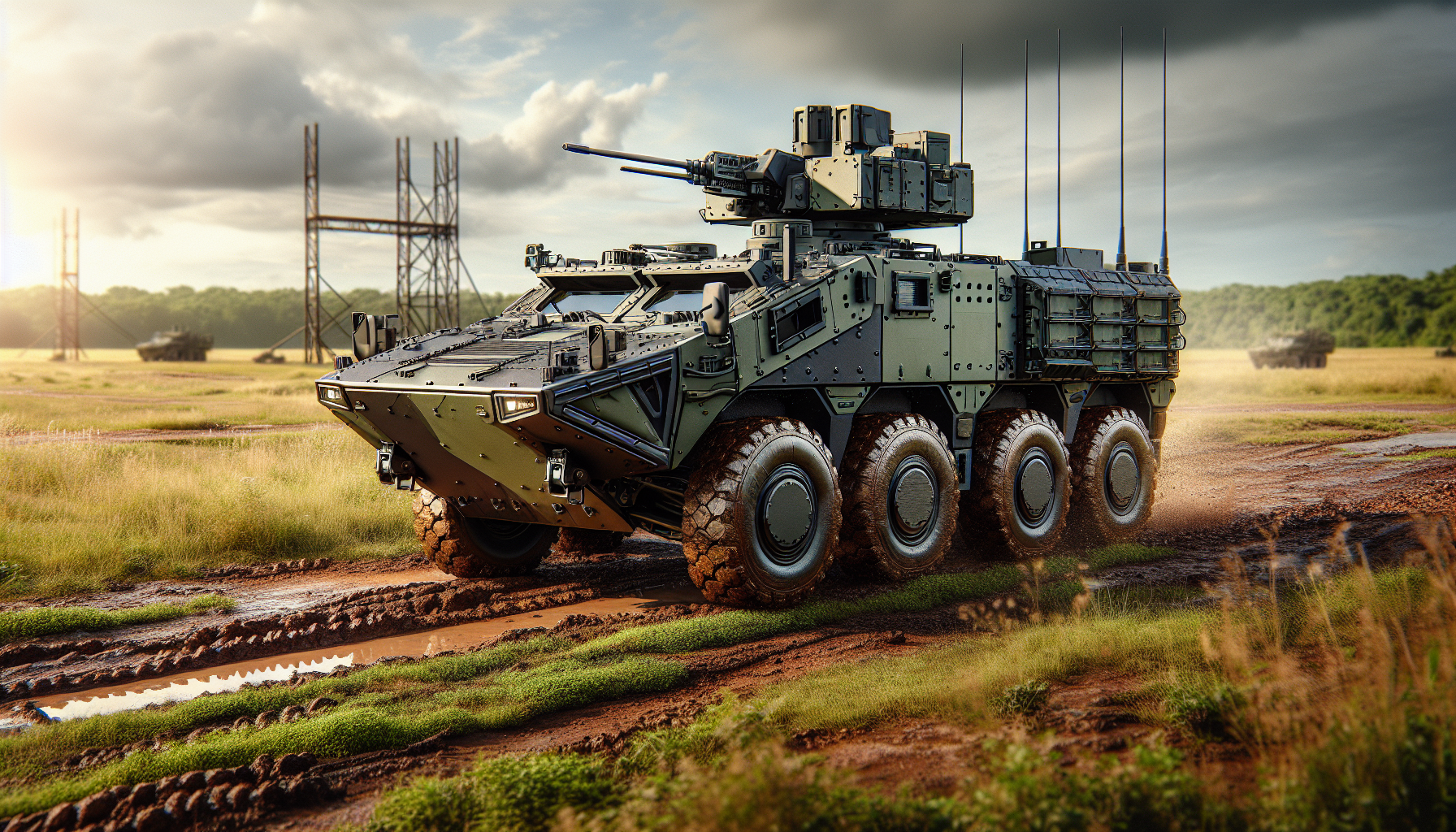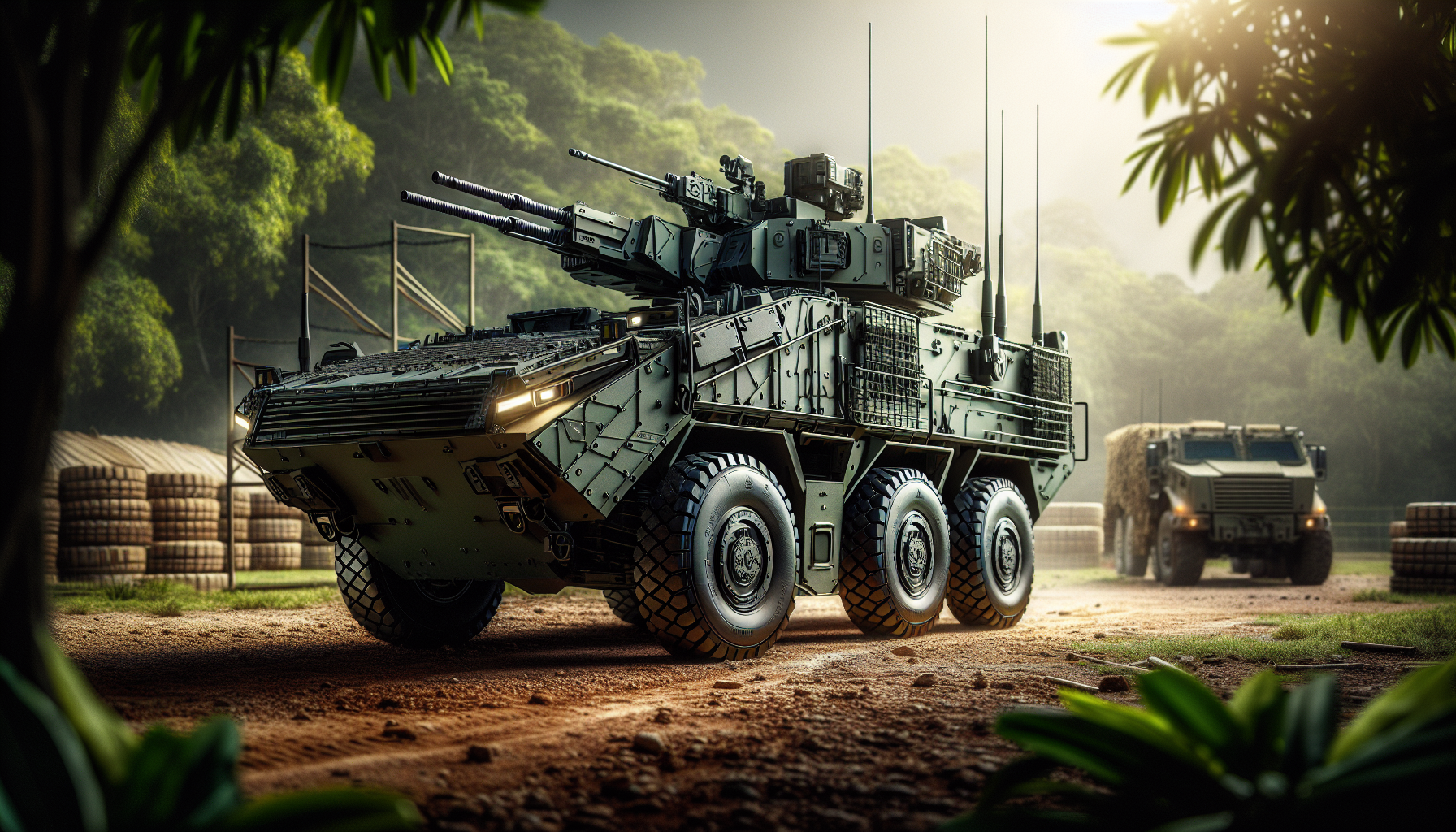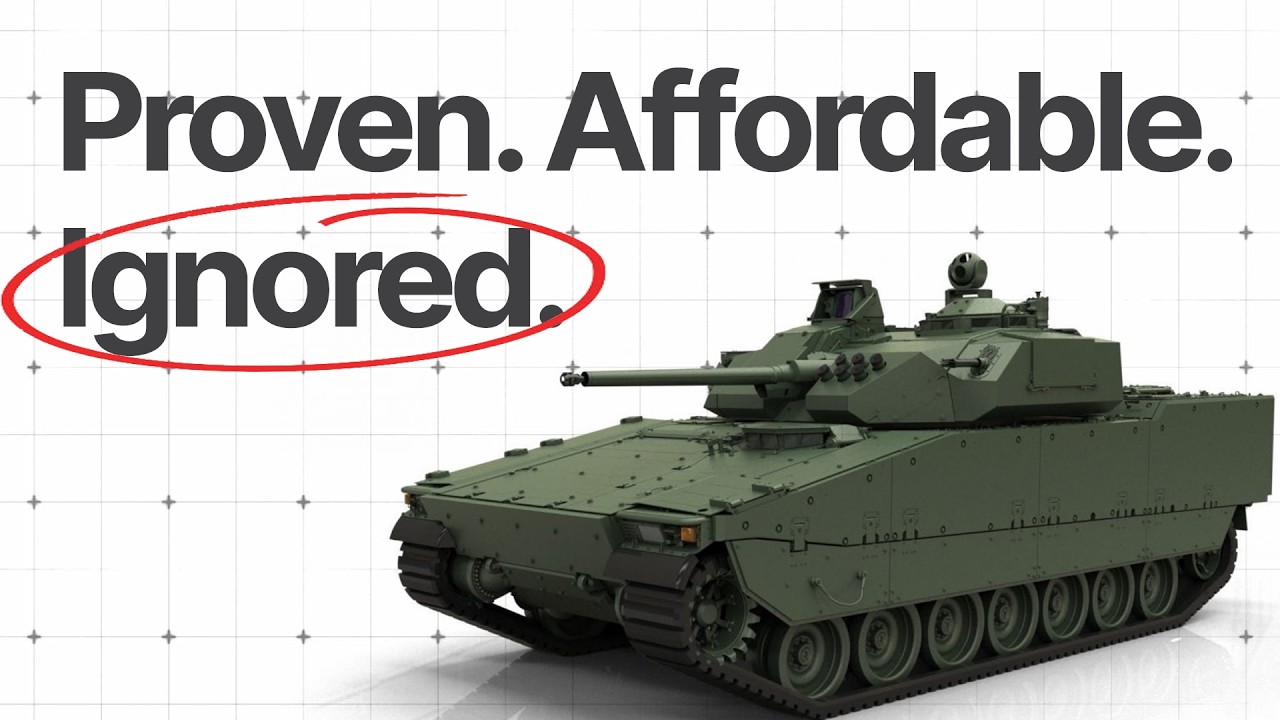The CV90 infantry fighting vehicle represents a significant advancement in military technology, boasting combat-tested reliability and continuous upgrades. With a proven track record from operational theaters such as Afghanistan and Ukraine, its modular design and speed contribute to its effectiveness on the battlefield. However, despite these attributes and the endorsement of numerous NATO allies, the U.S. military has not adopted this vehicle. Instead, substantial financial resources have been allocated to the development of new platforms, many of which have subsequently been canceled.
This article explores the reasons behind the U.S. military’s reluctance to purchase the CV90, investigating factors such as military doctrine, procurement politics, and the potential impact of a nationalistic “not invented here” mentality. By analyzing the capabilities of the CV90, along with its comparative advantages over alternatives, a comprehensive understanding of the implications for U.S. defense policy emerges. The examination ultimately raises critical questions about the effectiveness and efficiency of current military procurement practices.
Why Doesn’t The US Just Buy The CV90?
Overview of the CV90 Infantry Fighting Vehicle
History and Development of the CV90
The Combat Vehicle 90 (CV90) has a storied history that reflects advancements in military technology and shifts in strategic defense priorities. Initially developed by Bofors in Sweden during the 1980s, the CV90 was designed to address the evolving needs of ground warfare. Its first variant entered service in 1993, and since then, the vehicle has undergone significant upgrades to incorporate modern military technology. The CV90 is renowned for its modular design, allowing for various configurations that can adapt to different combat roles. This adaptability has ensured its continued relevance on contemporary battlefields, from the rugged terrain of Afghanistan to the urban environments of Ukraine.
Core Features and Technical Specifications
The CV90 boasts a range of core features that enhance its operability and combat effectiveness. It is typically armed with a 30mm or 40mm cannon, supplemented by anti-tank guided missiles and a robust array of passive and active protection systems. Weighing in at approximately 30 tons, the vehicle is highly mobile, achieving speeds of up to 70 km/h on roads and demonstrating significant off-road capabilities. Notably, its modular armor design allows for upgrades and repairs to be conducted more efficiently, which is critical in dynamic combat scenarios. Furthermore, the CV90’s advanced command and control systems facilitate real-time data sharing, enhancing situational awareness for commanders.
Combat Performance Across Different Conflicts
The CV90 has seen extensive operational use in various conflicts, showcasing its versatility and reliability. Whether in the mountainous terrains of Afghanistan or amidst the combat operations in Ukraine, this infantry fighting vehicle has consistently demonstrated its capabilities. Its integration into NATO forces highlights a degree of interoperability that is increasingly crucial in multinational operations. Reports from these engagements indicate that the CV90 has successfully operated in concert with allied forces, affirming its status as a validated choice for modern military needs.
The Case for Purchasing the CV90
Proven Track Record in NATO Operations
The CV90’s performance in NATO operations serves as a compelling argument for its potential adoption by the U.S. military. As allies within NATO have utilized the vehicle effectively, including during deployments in high-stakes environments, its proven track record underscores its operational readiness and reliability. These successful engagements enhance mission outcomes and foster greater integration both within and among allied forces, creating a unified front against emerging global threats.
Cost Effectiveness Compared to Developing New Vehicles
One of the primary reasons for considering the CV90 within the U.S. military’s procurement strategy is the cost-benefit analysis it presents. Developing new vehicles requires substantial investment, often resulting in lengthy development timelines that can lead to budget overruns and project cancellations. In contrast, purchasing the CV90 could expedite the bolstering of operational capacities with a vehicle that has undergone years of refinement and upgrade. This financial prudence aligns with current defense budgeting pressures, where every dollar must be accounted for in ensuring military readiness.
Modular Design and Adaptability to Changing Warfare
The modularity of the CV90 further enhances its attractiveness as a viable candidate for U.S. military procurement. As warfare evolves, so too do the demands placed on military vehicles. The CV90’s adaptable design enables it to be reconfigured for various roles, such as personnel transport, reconnaissance, or command and control. This versatility ensures that it remains capable of meeting near-future operational needs without requiring significant redesign or overhaul, thereby maximizing return on investment over its lifecycle.

U.S. Military Procurement Politics
Overview of Current Procurement Processes
The procurement process for military equipment in the United States is complex and often contentious. Characterized by bureaucratic layers and regulatory compliance, decisions regarding new acquisitions are influenced by myriad factors including strategic imperatives, budget allocations, and technological advancements. The current environment emphasizes risk aversion, resulting in a focus on long-term projects which can inhibit timely responses to emergent needs.
Factors Influencing Military Procurement Decisions
A myriad of factors influences procurement decisions within the U.S. military, including political considerations, technological innovations, and shifting defense strategies. Stakeholders including military leadership, congressional committees, and defense contractors exert substantial influence over the outcome of procurement initiatives. Furthermore, the interplay of perceived threats, operational requirements, and fiscal constraints complicates the decision-making process, often resulting in delays that hinder military readiness.
Political Implications and Budget Constraints
Political considerations are inextricable from military procurement. Budget constraints often direct focus toward projects that align with domestic political agendas or economic interests, rather than those that serve immediate operational needs. The influence of lobbyists and defense contractors further complicates this landscape, as the quest for funding can lead to conflicts among diverse interests. Consequently, this dynamic can result in sub-optimal procurement outcomes, particularly when timely deployment of proven systems, such as the CV90, are sidelined by political maneuverings.
U.S. Defense Doctrine and Strategic Considerations
Current Doctrine and Its Impact on Vehicle Selection
The existing defense doctrine in the United States remains heavily focused on technological superiority and rapid response capabilities. This influence shapes the criteria used in vehicle selection processes. As the U.S. military seeks to maintain an edge over adversaries, there is often a proclivity towards developing cutting-edge systems internally, rather than adopting already proven solutions like the CV90. This inclination can lead to the neglect of capable systems that fit well within current doctrines, ultimately compromising operational efficiency.
The Role of Innovation and ‘Not Invented Here’ Syndrome
The U.S. military’s approach to innovation often reflects a ‘not invented here’ syndrome, where there is a resistance to adopting foreign technologies or systems. This mentality impedes the consideration of successful models from allied countries, such as the CV90. Although domestic innovation is valued, an excessive focus on developing new systems risks overlooking viable solutions that could be readily integrated into U.S. forces. The failure to acknowledge the capabilities of the CV90 underscores the potential for missed opportunities in enhancing military readiness.
Compatibility with Existing U.S. Forces and Strategies
Compatibility with existing U.S. forces and strategies is a pivotal consideration in any procurement decision. The CV90’s design and capabilities can complement the existing fleet of armored vehicles, enhancing operational cohesion. However, integrating a new vehicle into the arsenal involves considerations far beyond mere specifications—it requires extensive training and adaptation of tactics. The readiness of U.S. forces to embrace a new system like the CV90 can fundamentally affect its successful incorporation into the larger framework of military operations.

Previous U.S. Evaluations of the CV90
Historical Tests Conducted by U.S. Forces
Historically, the CV90 has undergone evaluations by U.S. forces to determine its suitability and effectiveness in combat scenarios. These assessments were designed to test its capabilities against the evolving landscape of warfare and to gauge its interoperability with NATO equipment. Various tests have yielded insights into its maneuverability, survivability, and overall combat performance, leading to valuable data that informs procurement decisions.
Outcomes and Findings from These Evaluations
The outcomes of these evaluations revealed that while the CV90 performed admirably in many areas, there were also limitations noted by evaluators. Concerns over logistical support, maintenance requirements, and regional specifications were frequently highlighted. Such evaluations undoubtedly contribute to understanding the vehicle’s potential utility within U.S. operational contexts and underscore the complexity of adopting a foreign system with an established operational history.
Reasons for Not Adopting the CV90 Post-Evaluation
Despite promising evaluations, there are historical reasons behind the U.S. military’s reluctance to adopt the CV90. Institutional preferences for domestic development, combined with perceived operational disparities, often influenced the decision-making process. High levels of bureaucracy and resistance to change can compel the military to favor in-house solutions even when compelling arguments for external systems exist. This aversion has led to missed opportunities in leveraging effective technologies already available in the market.
Alternatives to the CV90
Overview of Current U.S. Programs and Initiatives
In light of the absence of a decision to procure the CV90, the U.S. military has initiated several home-grown programs aimed at developing new infantry fighting vehicles. Initiatives such as the Armored Multi-Purpose Vehicle (AMPV) and the Next Generation Combat Vehicle (NGCV) represent attempts to address perceived shortcomings in U.S. armored capabilities. These programs aim to integrate advanced systems and technologies, reflecting a commitment to maintaining a cutting-edge arsenal.
Strengths and Weaknesses of Alternatives
While indigenous programs promise tailored solutions, they also face significant drawbacks. The emphasis on developing new technologies often involves lengthy timelines, inflated budgets, and the risk of project cancellations. Moreover, the opportunity costs associated with sidelining proven alternatives like the CV90 come into play, as the military may miss out on immediate operational enhancements available from established systems. Furthermore, ongoing delays in current projects can exacerbate challenges related to readiness and sustainment.
Analysis of Budget Allocation Across Different Projects
A critical element of military procurement includes the analysis of budget allocation across various initiatives. As resources are finite, competition among programs can lead to fragmented focus and diluted support for highly effective systems. The constraints of defense budgets necessitate a comprehensive evaluation of financial commitment to existing projects versus the potential benefits of procuring a proven vehicle like the CV90—reinforcing the argument for a more strategic approach to defense spending.

International Allies and Their Adoption of the CV90
Countries that Use the CV90 and Their Reasons
Several countries, including Sweden, Norway, and Switzerland, have adopted the CV90 into their military arsenals. Each nation has recognized the operational advantages presented by the CV90, prioritizing its versatility, combat performance, and NATO interoperability. These nations seek to enhance their ground capabilities amid evolving security dynamics, reflecting a collective understanding of the CV90’s potential to meet present and future threats effectively.
Comparative Analysis of Allied Military Needs
The adoption of the CV90 by various allies highlights a comparative analysis of military needs across different nations. While the requirements of each may differ based on geopolitical considerations, the common denominator remains a necessity for verified systems that provide enhanced operational effectiveness. Analyzing these differing needs can inform U.S. defense policy by emphasizing the value of cross-national collaboration and the wisdom of leveraging ongoing partnerships.
Impact on NATO Cohesion and Interoperability
The widespread use of the CV90 among NATO allies fosters greater cohesion and interoperability within multinational operations. When allied forces are equipped with compatible systems, their ability to operate seamlessly enhances collaborative effectiveness. Each reinforcement of shared capabilities contributes to a united front, which is essential for addressing emerging global security challenges. Thus, the CV90 not only serves the individual needs of each nation but strengthens NATO as a collective defense entity.
Technological Innovations in Modern Armored Vehicles
Emerging Technologies Influencing Modern Warfare
The landscape of modern warfare is rapidly evolving, with emerging technologies playing pivotal roles in shaping how conflicts are fought. Innovations such as artificial intelligence, robotics, and advanced targeting systems are redefining capabilities on the battlefield. Vehicles like the CV90 must integrate these technologies to maintain operational relevance amid a backdrop of sophisticated adversaries that leverage similar advancements.
Integration of Drones and Autonomous Systems
As unmanned aerial systems and autonomous vehicles become increasingly prevalent, their integration with armored platforms becomes crucial. The CV90 has the potential to serve as a platform for drone operations, facilitating reconnaissance and target acquisition. Moreover, the incorporation of autonomous capabilities could enhance battlefield awareness, allowing for timely decisions and responses in high-tempo environments. This adaptability will be essential as warfare continues to evolve in favor of technology-driven solutions.
How the CV90 Adapts to Technological Advancements
The modular design of the CV90 positions it favorably to adapt to technological advancements. As new systems and upgrades become available, the vehicle can be reconfigured to accommodate these enhancements without necessitating a complete redesign. This flexibility ensures that the CV90 maintains its effectiveness in the face of changing warfare tactics and technological innovations, thereby reinforcing its standing as a viable choice for military forces seeking modernized solutions.
Potential Risks of Continued Development Over Purchase
Delay in Delivery of Needed Capabilities
The decision to develop indigenous systems over procuring established vehicles like the CV90 carries inherent risks, primarily the delay in acquiring necessary capabilities. Timelines for development can stretch for years, delaying the introduction of critical operational enhancements that could otherwise be realized immediately. This lag can have cascading effects on military readiness and effectiveness, highlighting the urgency of addressing immediate needs with existing assets.
Risk of Program Abortions and Budget Overruns
Numerous defense programs in the U.S. have faced issues of budget overruns and project cancellations, emblematic of the challenges associated with large-scale military procurements. The risk of program abortions is particularly relevant today, where ambitious initiatives may falter due to funding constraints or shifting priorities. In contrast, opting for proven systems like the CV90 mitigates the risk of sunk costs and promotes efficient use of defense budgets by aligning investments with operational needs.
Impact on Readiness and Operational Effectiveness
The cumulative effects of delays and potential program failures carry significant implications for military readiness and operational effectiveness. By prioritizing the development of new systems, there may be a resultant frustration in swift responses to emerging threats that require robust ground capabilities. The alternative of integrating an established vehicle like the CV90 could enhance readiness levels, ensuring U.S. forces are prepared to meet the demands of contemporary combat environments.
Conclusion
Summary of Key Points
In summary, the CV90 infantry fighting vehicle presents a compelling case for consideration within the U.S. military’s procurement strategy. Its proven track record, cost-effectiveness, and adaptability align with the current needs of modern warfare. Furthermore, the political and budgetary realities surrounding U.S. defense procurement necessitate a fresh evaluation of acquisition processes to prioritize readiness over internal development timelines.
Final Thoughts on the Implications of Not Purchasing the CV90
The decision to overlook the CV90 signifies broader implications for U.S. military strategy, particularly as allied forces continue to leverage its capabilities. A refusal to consider established systems can stifle operational readiness and undermine the ability to respond effectively in crisis situations. As international security dynamics evolve, the necessity to integrate proven technologies becomes increasingly paramount.
Looking Forward: Recommendations for U.S. Military Procurement
Moving into the future, it is recommended that U.S. military procurement policies embrace a more holistic view that considers the operational benefits of established foreign systems. Acknowledging the potential advantages of the CV90 may not only enhance U.S. capabilities but also reinforce NATO cohesion and interoperability. In a landscape where military effectiveness hinges on timely adaptation and strategic foresight, embracing solutions like the CV90 can serve as a pivotal step in ensuring the U.S. maintains its strategic edge in global defense.
